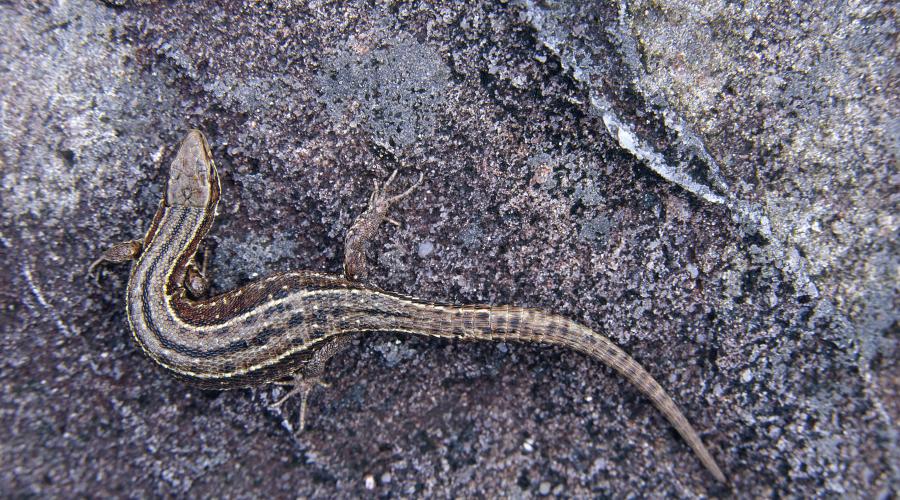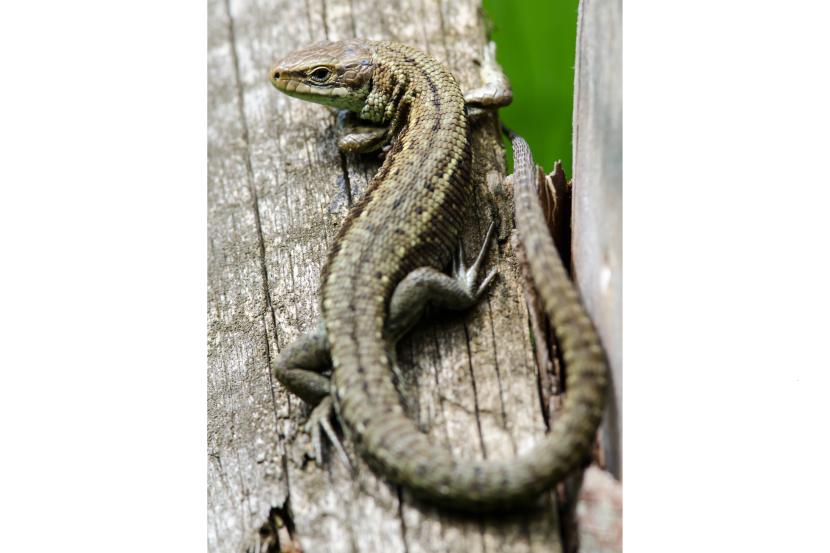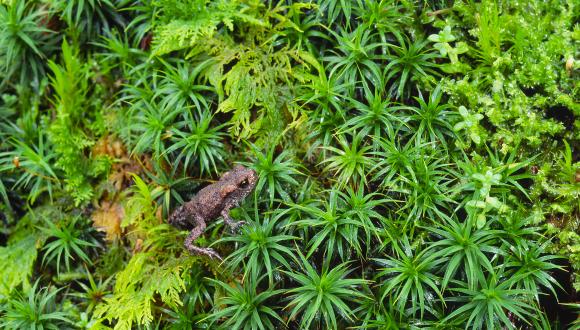
Common lizard
The common lizard, as its name suggests, is found widely across most of Scotland.
Common lizards (Zootoca vivipara) can vary in colour, with individuals varying from brown, to grey, to green. They could be confused with sand lizards, although in Scotland these are only found in one introduced population on the island of Coll.

This species is also sometimes known as the viviparous lizard as animals found in cooler parts of its range (including Scotland) give birth to live young.
During the mating season, males will chase and bite females, and will fight other males where encountered.
Common lizards often like to bask in open spaces warming up in the sunshine, and can often be heard scurrying into the undergrowth when disturbed.
When trapped or afraid, the common lizard is able to shed part of its tail, leaving it wiggling in the path of a predator as a distraction while the animal makes its escape. The animal can regrow the tail and perform the same display again if needed.
The species is less common in the Central Lowlands and isn’t found at all in the Northern Isles.
Scotland's only native legged reptile is the common lizard.
Protection of common lizards
Find out about protected species of amphibian and reptile.
Report a sighting
You can report any sighting of an amphibian or reptile to the Record Pool.
Alternatively, find out about taking part in the National Amphibian and Reptile Recording Scheme.
Find out more
Read our guidance for planners and developers on protected animals.
How can you help?
Reptiles and amphibians are both threatened groups, so it is important that we make space for these important creatures where we can. Here are some tips for ways that you could help:
- You could consider the addition of a pond to your garden to create more habitat, or encourage the growth of bug friendly plants to ensure a plentiful food supply.
- Using non-toxic methods of pest management will prevent reptiles from consuming prey that are contaminated with poison.
- Ensure that green spaces are preserved and kept as wild as possible.
- Record any reptile or amphibian sightings to the Record Pool and the NBN atlas.
- Get involved with your local amphibian and reptile group. There may even be opportunities for you to help with monitoring and surveying, or even trips to local sites!
- Help raise awareness about reptile and amphibian conservation within your school or workplace.
Further resources
For information regarding the legislation that protects our reptiles and amphibians, see Protected Species: amphibians and reptiles
For a comprehensive overview of the reptiles and amphibians of Scotland, see the book ‘The Amphibians and Reptiles of Scotland’ by Chris McInerny and Pete Minting.
For free online ID guides regarding British amphibians and reptiles, please refer to the ARG UK website.
Find out how you can take part in the National Amphibian and Reptile Monitoring Programme.
To find your local reptile and amphibian interest group, as well as additional resources, see the ARG UK website.






